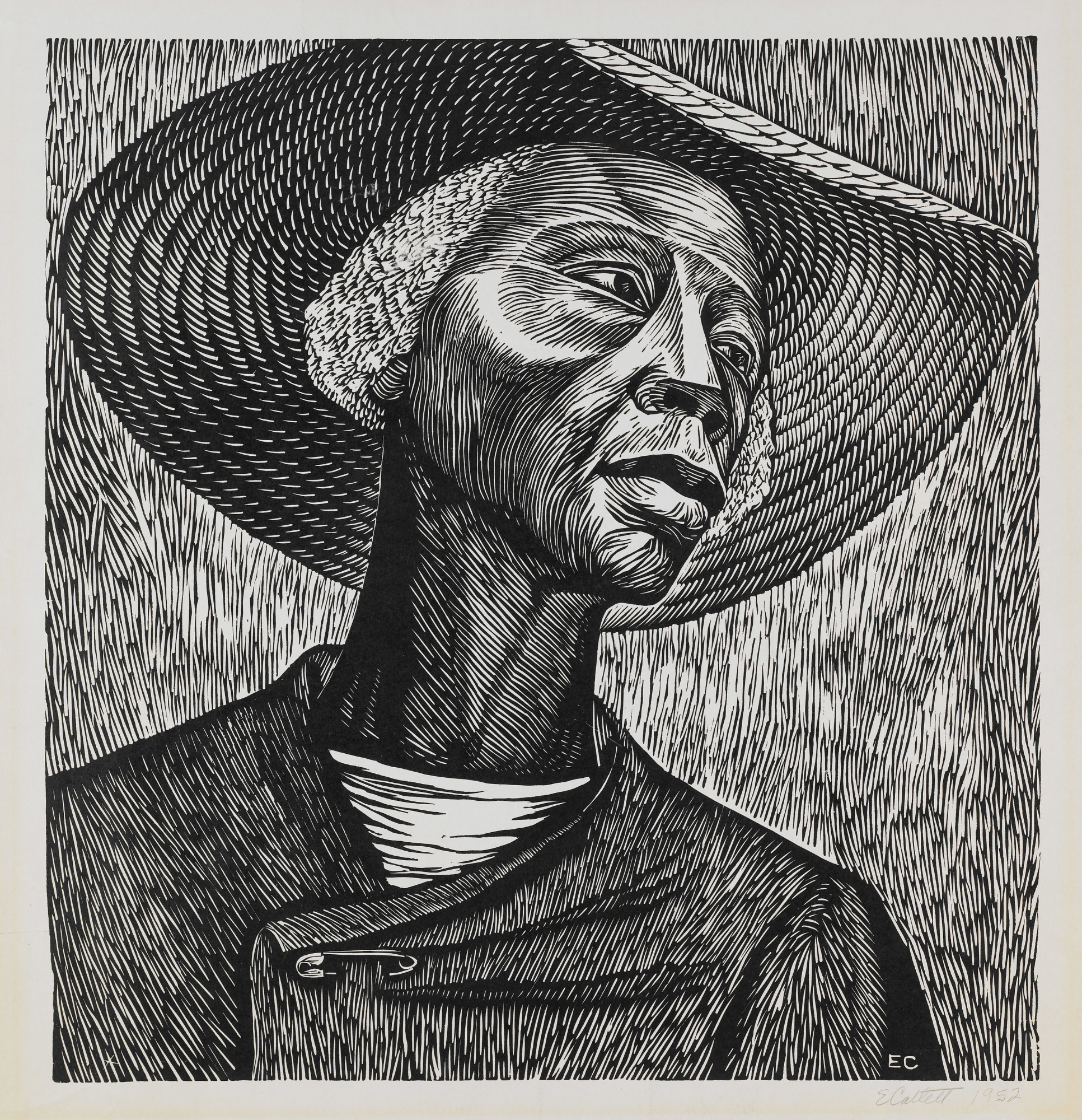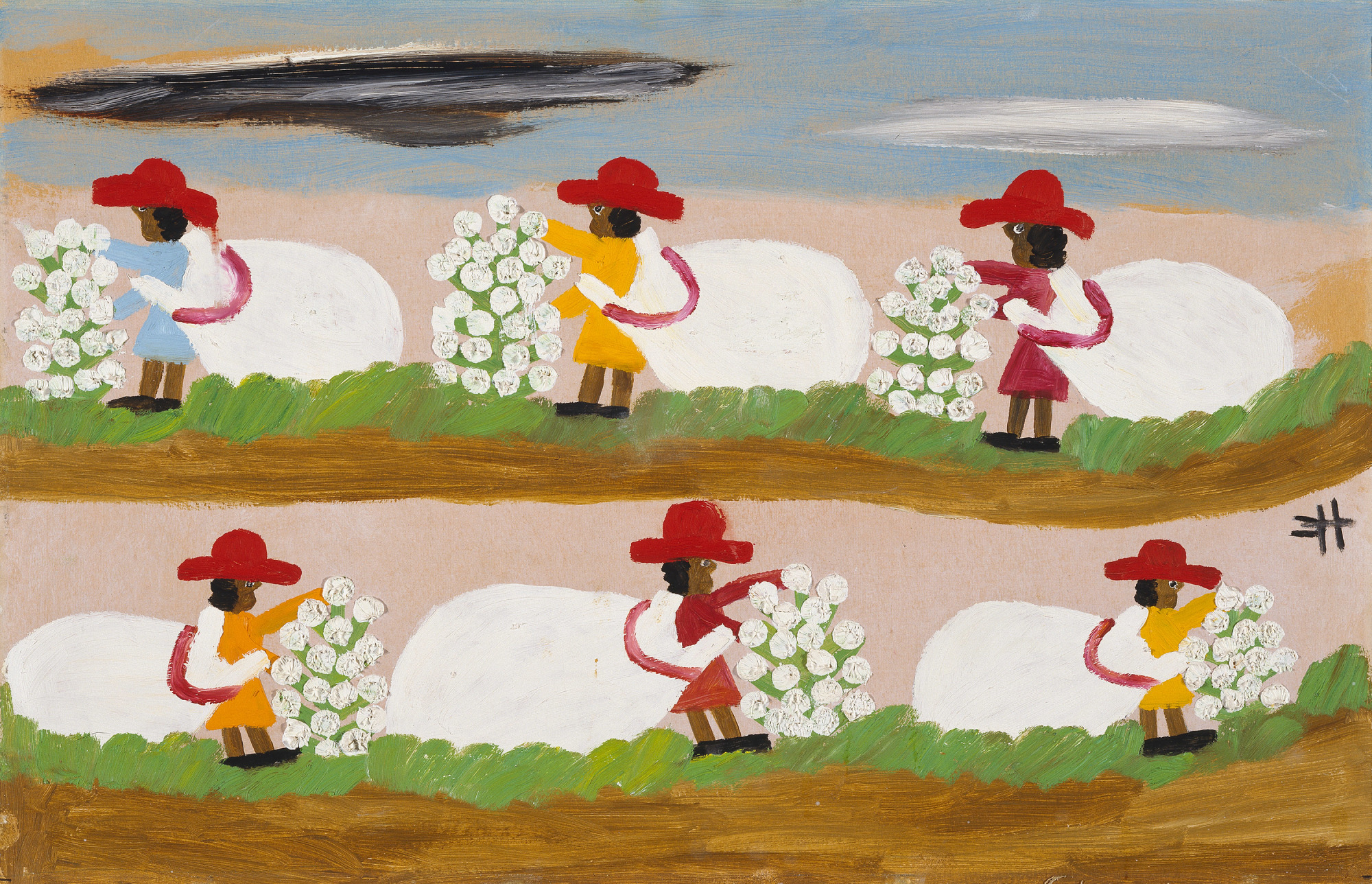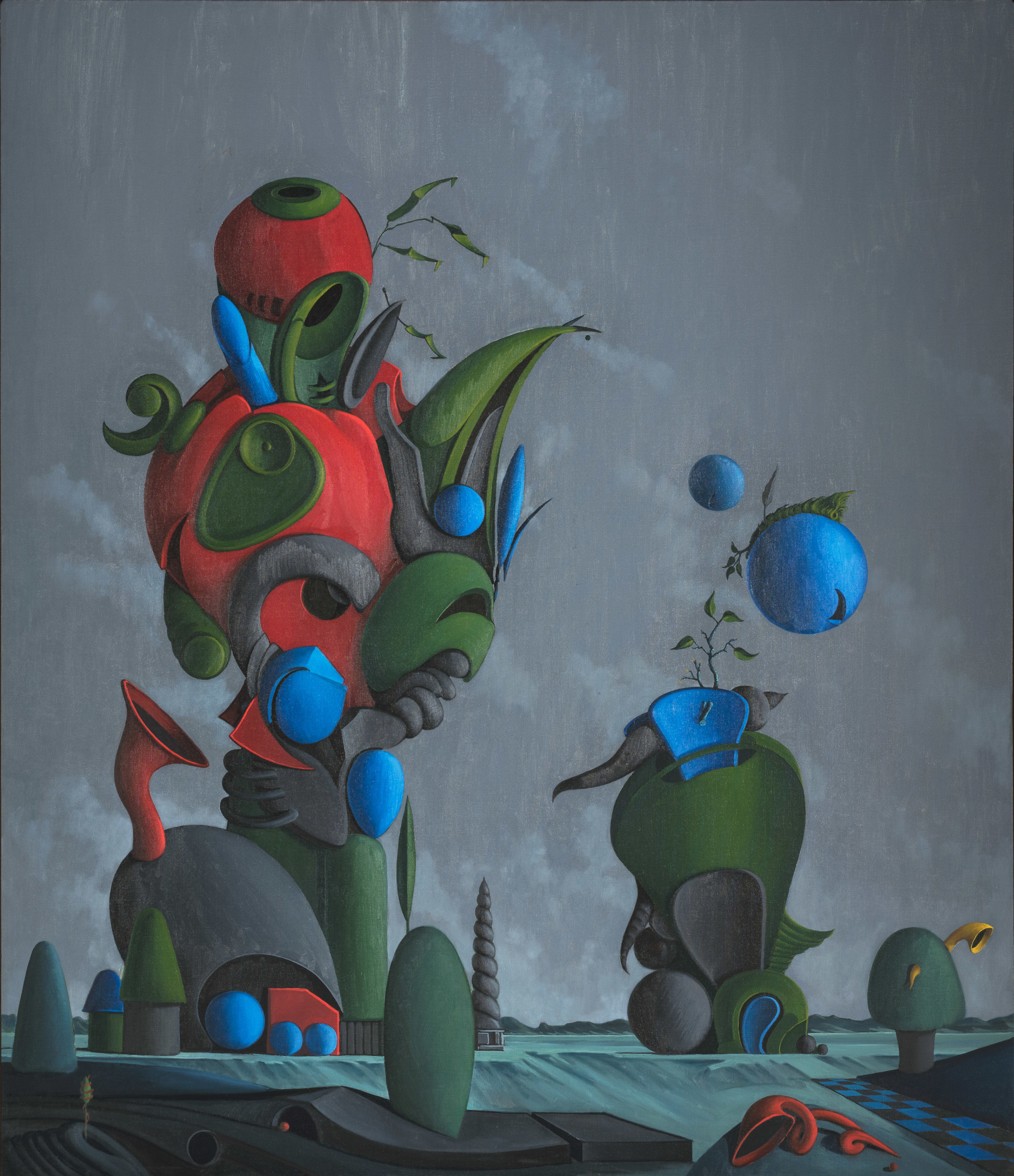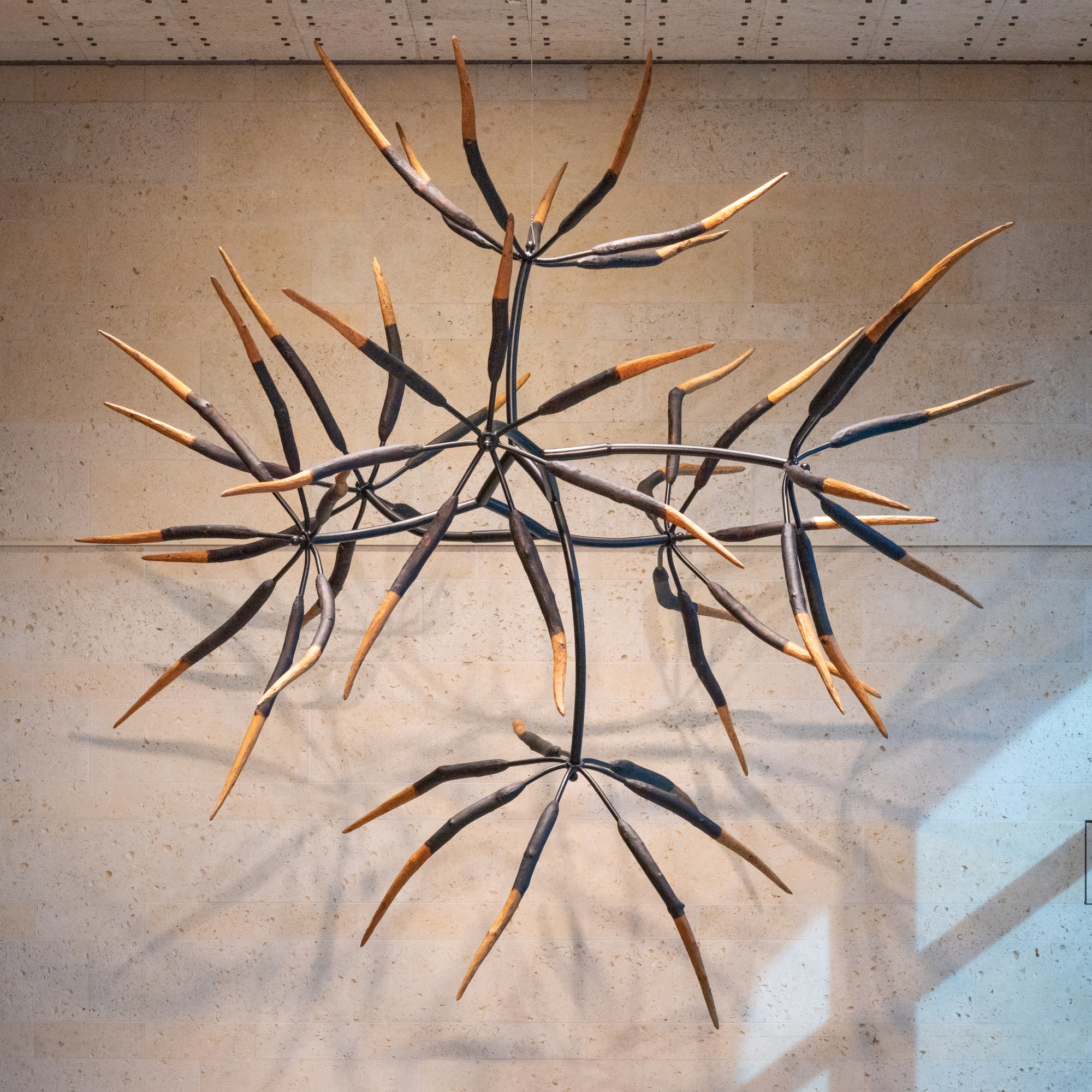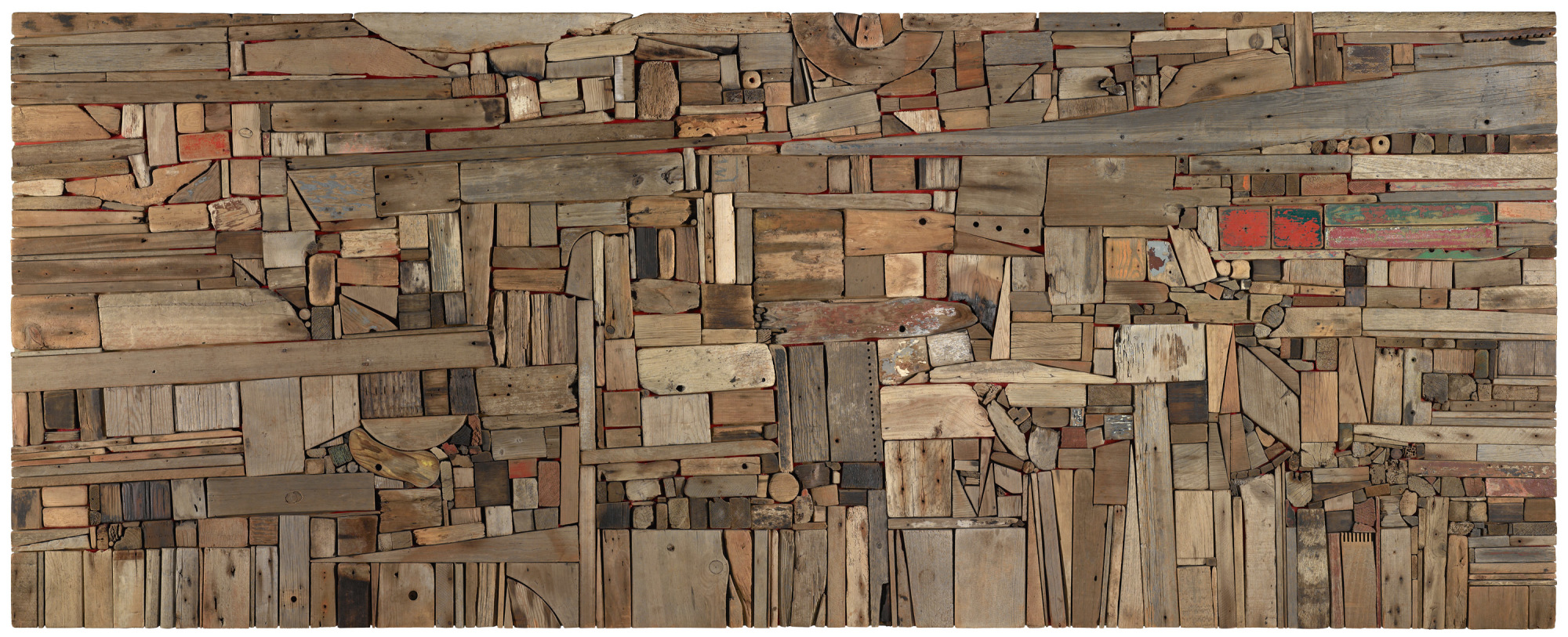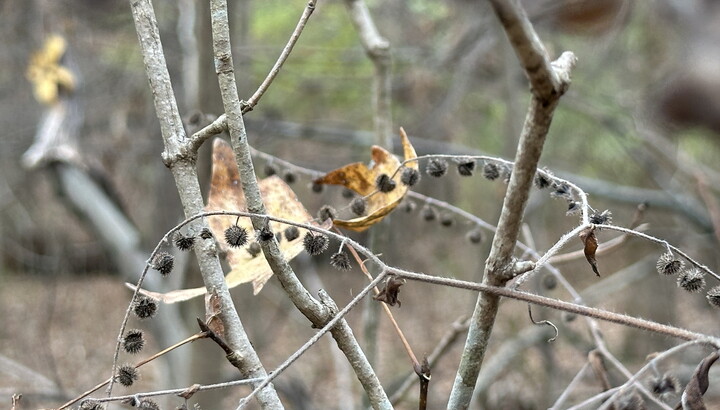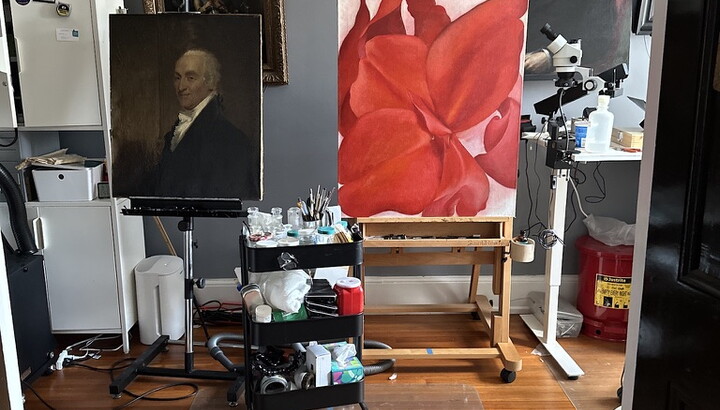The Carter Blog
Carter ARTicles
Six degrees of separation
Mar 20, 2024
“Six degrees of separation” is a theory that two people anywhere in the world are connected by no more than six social connections, which is pretty wild to think about. Art is not unlike people in that connections exist across time and place. From artist interactions and relationships to materials and subject matter, I am confident one could find creative ways to connect any two artists in less than six steps. Just for fun, I tried it out with two artists in our collection, Grant Wood and George Morrison.
Artist 1: Grant Wood (1891-1942)
More people visited Grant Wood’s Parson Weems’ Fable on the Carter’s online collection than any other artwork in 2023. Most well-known for his painting American Gothic (1930), Wood is associated with the regionalism movement, which focused on rural American scenes. He taught painting at the University of Iowa's School of Art from 1934 to 1941. One student of his, Elizabeth Catlett, recalls him saying, “do something that you know a lot about, the most about.”
Artist 2: Elizabeth Catlett (1915-2012)
The sculptor and graphic artist Elizabeth Catlett heeded her teacher’s advice. As the granddaughter of formerly enslaved sharecroppers, what Catlett knew the most about was the Black American experience, and this was often the subject of her work. According to the artist, her work was intended to be political and to convey specific social messages. When given the opportunity to join the artist collective Taller de Gráfica Popular, which advanced social causes through art prints, she moved to Mexico City and spent the rest of her life based in Mexico.
Artist 3: Clementine Hunter (1886?-1988)
Another depiction of sharecroppers in the Carter’s collection is Clementine Hunter’s bright painting Cottonpickers. Completely self-taught, Hunter was in her 50s when she began painting images of Black life in and around Louisiana where she lived. Despite the late start, Hunter was extraordinarily prolific, producing thousands of colorful paintings.
Artist 4: Valton Tyler (1886?-1988)
Like Hunter, Texas artist Valton Tyler was largely self-taught and created artwork for himself (as opposed to for the art world). Though he didn’t work from memory like Hunter, his surrealist, biomorphic compositions were from his mind’s eye. Tyler’s Guardian was also painted in 1973, the same year as Hunter’s Cottonpickers. Spoiler aAlert! Be on the lookout for some of Tyler’s artwork in the Carter galleries later this spring.
Artist 5: James Surls (b. 1943)
Another Texas artist who also uses dream-like, organic forms in their work is sculptor James Surls. His work Seven and Seven Flower, which hangs in the Carter’s Main Gallery, is inspired by his seven daughters. Surls used pine he sourced from his own land to create a larger-than-life suspended floral form composed of seven wood flowers, each with seven petals.
Artist 6: George Morrison (1919-2000)
George Morrison is another artist you can immediately associate with wood. He is known for his midcentury collages that emphasize wood’s unique material qualities (such as New England Landscape II), as well as for his brightly colored paintings. Born near the Grand Portage Indian Reservation in Minnesota, Morrison’s work is inspired by his Ojibwe roots and a connection to nature. He once said, “I seek the power of the rock, the magic of the water, the religion of the tree, the color of the wind, and the enigma of the horizon.”
Success! We found six degrees of separation between Wood and Morrison! It’s interesting to note that there are probably thousands of different groupings of artists and artworks we could have chosen to connect Wood and Morrison, because the threads between artists are rich and tangled. I encourage all intrigued parties to try out this exercise; seeking these commonalities between artists is a thought-provoking way to engage with art. For another entertaining grouping, pick up a hot-off-the-press Art Discovery Guide, titled Six Degrees of Separation, at the Information Desk during your next visit to the Carter.



